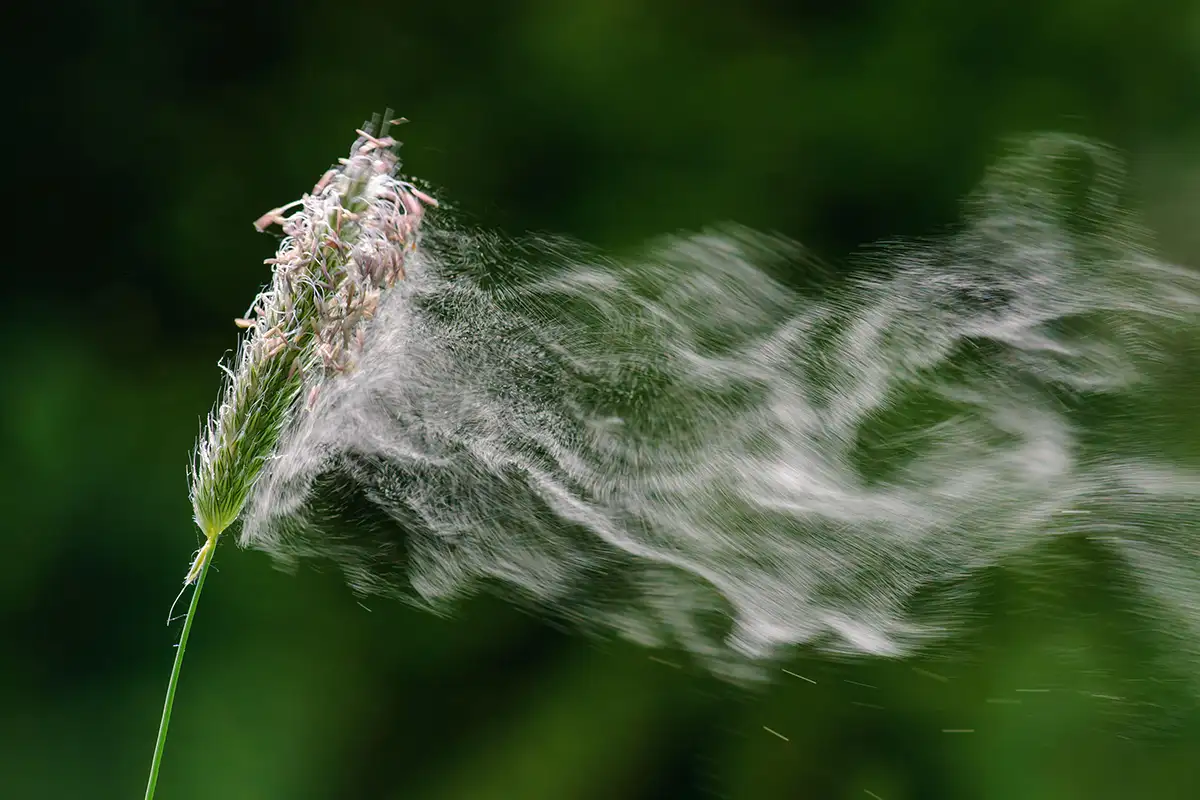Note: hay fever has no connection to hay. In the 1800s, people believed freshly cut hay caused it, hence the name. The true cause—pollen—was discovered in 1859 by British scientist Charles Blackley.
Climate change affects not only the health of the planet but also that of people, worsening conditions such as hay fever, formally known as allergic rhinitis. Temperature changes exacerbate its most severe symptoms: coughing, itchy eyes, runny nose and sneezing. This is because plants disperse pollen more abundantly and for longer periods. In the United Kingdom, the number of hay fever sufferers has trebled in the last 30 years.
A study published in the Proceedings of the National Academy of Sciences confirmed this. Data from 60 locations in North America covering 821 years showed that pollen seasons had lengthened by 20 days and pollen concentrations had risen 21%. The study found these changes were largely due to human activity, with the human contribution estimated at 19-35% for 1990-2018 and 22-41% for 2003-2018. William Anderegg, a co-author and scientist at the University of Utah, attested, “The health impacts are with us and likely to get worse.”
Other studies support this finding. One was by three government bodies in Switzerland, where hay fever was almost nonexistent 100 years ago, it now affects around 20% of the population. Another study funded by the European Commission also noted similar trends.
When foreign material like pollen, fungal spores, pet hair or mould enters the body, the immune system recognises it as harmful, even if it is not. This triggers an allergic reaction, causing the body to produce histamine, which leads to increased mucous production and inflammation. These reactions produce the familiar symptoms of hay fever. About 11% of British adults experience severe hay fever, with the pollen count peaking early in the evening.
Traffic pollution exacerbates hay fever by interfering with the respiratory system. Urban areas, despite having lower pollen counts than the countryside, see worse hay fever symptoms due to pollution, which also stresses plants, causing them to flower less but produce more potent pollen.
Rain can clear the air of pollen, with early, heavy and prolonged rain tending to keep pollen counts low all day, whereas rain in the afternoon has less impact. Prolonged hay fever can lead to severe eczema, characterised by dry, itchy and bumpy skin. Unlike infectious rhinitis, known as the common cold, hay fever is not contagious.
Plants produce pollen when temperatures are above freezing. During this time, buds open to allow bats, birds and insects to facilitate fertilization. Climate change, with its higher temperatures, gives plants more time to produce pollen and wind also helps spread it. Temperature plays a crucial role in pollen production. For grass, temperatures between 18 °C and 28 °C lead to high pollen counts on dry days, while for trees, it is 13 °C to 15 °C. At temperatures above 27 °C , pollen counts fall. Several consecutive warm days result in many high pollen days, but grasses can deplete rapidly, ending the season early. June 2023 was the hottest on record.
Wind conditions also affect pollen dispersal. Too little wind means pollen won’t get off the ground, while too much thins it out drastically. Pollen seasons are starting earlier and lasting longer, with levels so high that hay fever can start as early as January. Carbon dioxide, a greenhouse gas, causes plants to produce more pollen, as they convert it to sugar. Climate change could also alter pollen potency and the geographic distribution of allergenic plants.
To reduce exposure to pollen, people can take showers and change clothes when going indoors, wear sunglasses and hats outdoors and apply Vaseline around the nose to prevent pollen entry. Keeping windows closed and using air filters also help. It’s advisable to keep pets off couches and beds, close bedroom doors and wash hands frequently, especially after handling pets. Dust mites, another cause of hay fever, can be controlled by dusting, mopping and vacuuming regularly.
The primary medication to relieve hay fever is antihistamines, such as cetirizine, fexofenadine and loratadine, which block histamine production. These are available as tablets, nasal sprays, or drops and may cause drowsiness. A GP might prescribe steroid nasal sprays, which are non-addictive and have no major side effects. If other treatments fail, immunotherapy, involving injections of small amounts of pollen to build immunity, is an option, though it takes months.
Most people’s hay fever improves with age, although it can be worse for children and may develop later in life. Contrary to popular belief, honey does not relieve hay fever. A study at the University of Connecticut found no difference in symptoms between those consuming honey and those given a placebo.
Climate change has led to wetter winters, drier summers and more frequent and intense weather extremes. A poll of 7,000 people in the United Kingdom found that 37% had experienced hay fever symptoms for the first time in five years. Hay fever is only lethal in asthmatics, triggering asthma attacks in at least half of the cases. Data from the Office of National Statistics showed asthma deaths in England and Wales rose by 33% from 2008 to 2018.





















